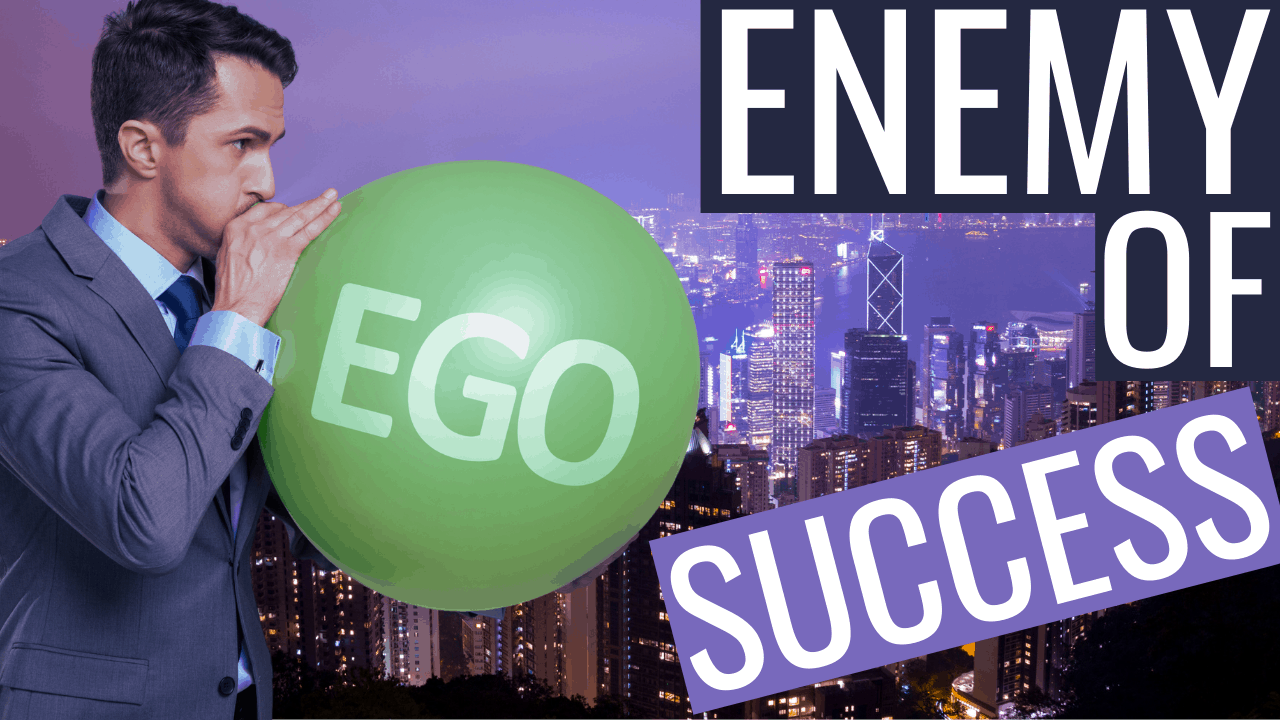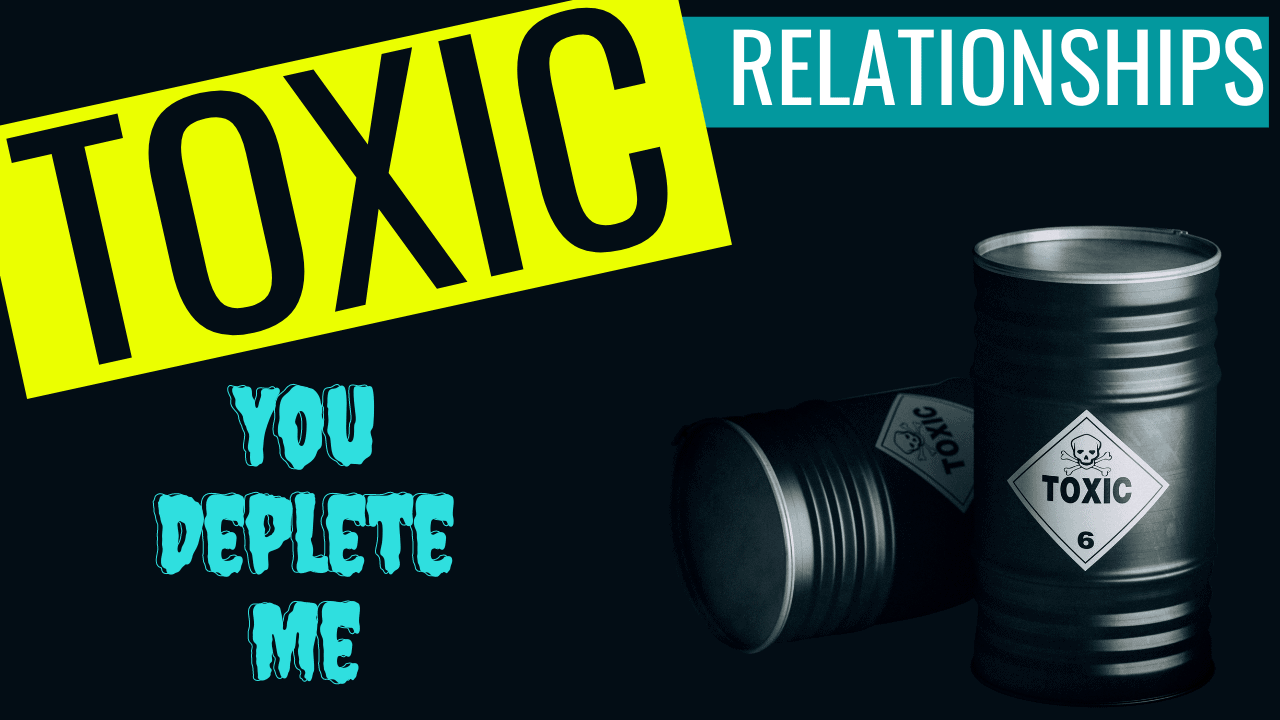The organisation is falling apart. Huge cracks are forming in the foundation and action must be taken before the whole structure comes tumbling down. Survival is in the balance. The organisation has expertise, technology, experience, investment, markets, prospects, good people – basically everything it needs to succeed. So what’s happening here? Put simply, a clash of egos.
The leadership team are at war with each other. While they have seen eye-to-eye on some things, they disagree on other important issues and cannot – will not – find any middle ground, compromise, or entertain a meeting of minds. The deafening mantra behind their communication is win-lose. “I’m right, you’re wrong.”
When your identity is invested in knowing what you are talking about – being successful, being the expert and being right – it generates an existential crisis when this belief is challenged. Your very being is threatened, so you fight for your life to protect the priceless, sacred ideas that you hold true about yourself. It’s a nasty business.
“Some of the biggest cases of mistaken identity are among intellectuals who have trouble remembering that they are not God.”
― Thomas Sowell
Hubris Syndrome – Crushing Innovation and Agility
Hubris syndrome was first described by ex-politician David Owen and psychiatrist Jonathan Davidson. It’s associated with excess power, and symptoms usually abate when the individual no longer holds that power. People who suffer from hubris syndrome change their personalities the longer they are in leadership positions. This can happen in business, politics, or any other field where hierarchies exist.
In fact, people with hubris syndrome display extreme pride, excessive self-confidence, and total contempt for others. These character traits lead to impulsive and often destructive behaviours. Hubris Syndrome blinds people in positions of power to the potential for their own vision to be flawed or incomplete and therefore to devalue other perspectives – especially those perceived to conflict or compete with the original vision. It is a self-deception that not only curses its victims but also eats away at innovation and agility like a cancer. If someone in a position of power exhibits three of more of these traits, you may be dealing with Hubris Syndrome (and it might be you!):
1. Sees the world as a place for self-glorification through the use of power. The leader starts to see the workplace primarily as an arena in which to exercise power and seek glory. They start focusing on themselves rather than the team.
3. Shows disproportionate concern for image and presentation. The leader becomes highly image focussed. They worry about what people say about them and how other leaders view them, even to the point of taking credit for other people’s work.
5. Conflates self with the nation or organisation. The leaders starts talking as if they are the organisation rather than part of it.
7. Shows excessive self-confidence and contempt of others. They start ignoring and even showing contempt for any criticism or comments that don’t support their opinions – to the degree that those who disagree with them are labeled as being negative, not team players and even poor at their job.
9. Shows accountability only to a higher court. A belief that rather than being accountable to the mundane court of colleagues or public opinion, the court to which they answer is: History, the gods or higher management.
11. Loses contact with reality. Often associated with progressive isolation.
13. Allows moral rectitude to obviate consideration of practicality. The leader allows their ‘broad vision’, to become the only moral, ethical or responsible direction for the organisation, regardless of practicality, cost or outcomes.
2. Takes action, primarily to enhance personal image. The leader has a tendency to make decisions of which the aim is to cast themselves in a positive light, making themselves look good.
4. Exhibits messianic zeal and exaltation in speech. A messianic manner of talking about current activities and a tendency to exaltation.
6. Uses the royal ‘we’ in conversation. They start associating, praising and rewarding team members based on the level of agreement rather than ability, effectively surrounding themselves with “yes men.”
8. Exaggerated self-belief in what they personally can achieve. They start micro-managing because they believe no one else can do the job better than they can.
10. Displays the unshakable belief that he will be vindicated in that court. The leader believes they are untouchable.
12. Resorts to restlessness and impulsive actions. Reckless and unpredictable behaviour maintains an atmosphere of confusion.
14. Displays incompetence with disregard for the nuts and bolts of policy-making. Overconfidence means the leader ignores policies or procedures when things go wrong. The vision is bigger than checks and balances – the means justify the ends. Others are there to make the ‘details’ work towards the vision.
“Power swells the head and shatters the crown.”
― Stewart Stafford
The Rampent Rise of Symptom 7
Owen and Davidson comment that “Individually, these are mostly narcissistic or hubristic behaviours, each potentially risky enough in their own right. But if several of them are being demonstrated by someone in an organisation you care about, something far more dangerous is at play: Hubris Syndrome”.
Symptom 7: “Excessive confidence in their own judgements and contemptuous of others’ opinions” tends to crop up regularly in organisations worldwide. It’s a natural consequence of someone becoming trapped in their own biased, narrow, one-sided personal perspectives – often (but not always) aided by hierarchical structures that do not permit questioning authority. The entanglement of a narrow, one-sided perspective can affect anyone, not just those in ‘top jobs’. However, the self-confidence that comes from having ‘made it to the top’ can easily cause someone to slip past an invisible threshold so they end up imprisoned in a fortress of past success.
Combined with a further two or more symptoms required to meet the criteria, this leads to a systemic, organisation-wide undermining of cooperation and collaboration that eats away at innovation and agility like a cancer. Even without these additional symptoms, Symptom 7 is enough on its own to stifle, smother and strangle innovation and agility when the affected individual ends up in an authority trap.
“Feelings of superiority always stem from an illusion.”
― Marty Rubin
Authority Traps Strangle Innovation – Even if You’re Einstein
If you were to ask people to name a famous physicist, most would say Albert Einstein despite the many other physicists of his generation also making great discoveries. Here’s the thing: the authority trap blinded them to what Einstein could see – until Einstein ended up trapped himself.
When Einstein first developed relativity theory, other physicists were already familiar with most of its constituent parts. They just couldn’t see how to connect the dots and make the final step. So, why was Einstein able to see what others could not? The problem for the more established scientists of his day was that they found it impossible to set aside 250 years of Newtonian orthodoxy. The orthodoxy on which they had built their careers, reputations and identities. In short, they could not escape their authority traps.
Unlike other reputed scientists of his time, Einstein was repeatedly rejected as an outsider. He was a lowly second-class clerk, in a Swiss patent office. In this way, his sense of self was not constrained by the Newtonian orthodoxy, so he could see beyond its inherent limitations.
“There were long stretches of DNA in between genes that didn’t seem to be doing very much; some even referred to these as “junk DNA,” though a certain amount of hubris was required for anyone to call any part of the genome “junk,” given our level of ignorance.”
― Francis S. Collins
The Pattern of Progress
The Theory of Relativity, with its famous E=mc2 equation, was one of the two most significant breakthroughs in early 20th century theoretical physics. Both breakthroughs followed a common (and often repeated) pattern in scientific progress and human behaviour:
- A new leader emerges with valuable insights that go beyond the current paradigm;
- Those trapped in the current orthodoxy remain blind to these insights;
- Established authorities see the very suggestion of these insights as ridiculous; then as they gain wider support, dangerous;
- Over time, so many people come to accept the new way of seeing that it becomes the new paradigm;
- Those adhering to the old orthodoxy die out, literally as well as metaphorically;
- Viewed from the vantage point of the new paradigm, it seems almost inconceivable that anyone could ever have ‘fallen for’ the old orthodoxy.
“First they ignore you, then they laugh at you, then they fight you, then you win.”
— Mahatma Gandhi
Egotism Looks Like Posturing and Intellectual Bullying
The trap of the current orthodoxy affects many of us in different ways. These traps readily and easily end up deeply enmeshed with, biased and limited by, our sense of who we are. These traps pose a greater risk for those in positions of power and authority because their status as an authority depends on the continued dominance of the existing orthodoxy.
Because he had to fight so hard to be taken seriously, Einstein was contemptuous of authority figures who blocked his entry to the physics elite. However, later in life, Einstein himself succumbed to his own authority trap. After his authority had turned him into a global celebrity he joked: “To punish me for my contempt of authority, Fate has made me an authority myself.”
Einstein’s authority blinded him to the insights of the other major breakthrough of 20th century theoretical physics – quantum mechanics. Einstein never accepted the Uncertainty Principle at the heart of quantum mechanical theory. Having famously asserted that “God does not play dice”, Einstein spent the final years of his life in an ultimately futile attempt to prove it wrong.
“If there’s anything more important than my ego around, I want it caught and shot now.”
― Douglas Adams
Caught in a Trap
Max Planck, the founder of Quantum Theory and winner of the 1954 Nobel Prize in Physics, said of Einstein – who was a close friend: “He could no longer take in certain new ideas in physics which contradicted his own firmly held philosophical convictions”. As a globally celebrated authority, Einstein was caught in the trap of the new orthodoxy that he himself had created. Anyone who occupies a position of authority can fall into this kind of trap and succumb, stifling innovation and agility. By getting caught up in who we are, we fail to see who we might become.
The good news is that none of it is real. All of this is ego – just an accretion of vapid thoughts and feelings that we have about ourselves. It has no substance and no actual reality. But it can ruin our relationships in direct proportion to the degree to which we identify with it or value it for its own sake. It is, without doubt, the biggest barrier that any of us have to fulfilling our true potential. The irony is that in protecting itself, the ego destroys communication, relationships and even businesses – and for what? The privilege of being seen to be right.
“The ego is what drives a self-serving individual who hates to admit they are wrong.”
― Suzy Kassem
7 Beliefs That Over-inflate the EGO
Fortunately in the example above, the egos are high-profile and easy to spot (unless you have a big ego yourself). Some others are more difficult to see because they can appear totally reasonable and in tune with our own ego.
I’m Right – Whether it’s through reason or feeling, you know you’re right. You have the intellect and the experience, and you will overcome any arguments to the contrary. If it’s a strong feeling you have, you will justify that feeling with logic.
I’m Nice – You really want to be liked and will avoid confrontation to maintain the feeling of being a nice person. You simply cannot abide the thought of anyone not appreciating your efforts to accommodate and value them.
I’m Fair – Even if it means upsetting someone, you have to do the right thing. You have a keen sense of morality and could not live with yourself if you abandoned your principles just to keep someone happy or make things work better.
I’m Successful – Your status and success says it all. You have the car, the clothes and the lifestyle to prove it. Why would anyone challenge you when you are evidently more successful than everyone around you?
I’m The Boss – You’ve worked tirelessly to get where you are today, and you have no desire to relinquish this hard-earned status. You don’t really care what people think. You’re paid the big bucks to make decisions and you carry the can.
I’m The Owner – It’s all very well for others to have an opinion but when all is said and done, it’s your business and you’re the one with everything to lose if it goes down the drain. You may listen to others, but they’ll never really get what being the owner means.
I’m Surrounded by Idiots – If you’d known what a bunch of losers you’d end up with, you’d never have employed them in the first place. If you can just keep them on the right track for a little longer, you’ll be able to sort things out – just not right now.
In practice our egos are a mashup of all or some of the above and many other beliefs too. Let’s underline this thought: egos are not inherently bad. In fact, having an ego is part and parcel of the human condition. Operating without an ego of some sort is simply not possible. So let’s be clear here: we’re not talking about eradicating the ego – just keeping it in its place. We need leaders to look inwards so they can recognise some of the belief systems that underpin their egos – particularly the ones that are not working for the greater good. We are each the leader – we all need to do this. Only when you understand that the ego is your own construct, can you begin to operate beyond it, rather than hanging on to it as if your life depends on it.
“People should not confuse opinions and rules with egocentric interests.”
― Duop Chak Wuol
Developing an Inflated EGO
Inflated egos are developed through insecurities, often driven by a barrage of negative self-talk that has resulted in self-doubt. If we do not develop a healthy ego, over time the end result is a vulnerable and insecure ego that feels constantly under threat. The inflated ego overcompensates for these uncomfortable feelings and ends in just as poorly a poorly developed ego. “Am I good or what? I am the greatest so you should all pay attention and do things my way.” (hiding deep feelings of self-doubt, shame and low self-worth)
If you have worked under a leader whose ego is in control of their brain, you will know how difficult it is to open their eyes to anything other than themselves. An overblown ego brings a sort of deafness and blindness to the leader where they cannot see the value in team member contributions. The scent of team mutiny hangs in the air.
Carl Jung said, “The first half of life is devoted to forming a healthy ego, the second half is going inward and letting it go… It is a remarkable fact that a life lived entirely from ego is dull, not only for the person himself, but for all concerned.” When someone has an inflated ego, they cannot be wrong. It becomes exceedingly dull to be around a person who is operating from an inflated ego, who hides behind a false sense of pride, and is completely unaware of how others view them. Because they cannot be wrong, they will hold onto bad decisions, blinded by the egocentrism they suffer from, rather than seeking counsel from their team.
Those on the receiving end can experience feelings of resentment and exhaustion in the presence of that individual, and an overall sense of being around someone who is toxic. Affirming their own sense of self-worth often results in putting others down or comparing themselves in a higher light, as if they are the better person…Snorefest.
When we bring our best authentic selves to the office, we set the foundation for exponential professional growth opportunities. Once you get to know your ego and intentionally work to keep it in check during stressful situations, there is no limit to what you can accomplish.
“Make your ego porous. Will is of little importance, complaining is nothing, fame is nothing. Openness, patience, receptivity, solitude is everything.”
― Rainer Maria Rilke
4 Steps to Managing EGO
To move beyond ego, and become an effective leader, you must engage with your superego and your heart to achieve a high degree of self-awareness. The superego is the ethical component of the personality that provides the moral standards by which the ego operates. The superego’s criticisms, prohibitions, and inhibitions form a person’s conscience. The superego’s positive aspirations and ideals represent one’s idealised self-image, or “ego ideal.” Without self-awareness, it is impossible to be an inspiring leader. Simply by improving self-awareness you will also become more generous, more considerate and more interested in others, thereby earning greater respect. This allows you to move past the ego and align with superego so that your heart can come shining through.
Achieving the level of self-awareness required to manage the ego requires consistent and persistent application. A thought is only a thought, which means a thought can be changed! Take as many opportunities as possible to ask yourself if that last thought is moving you toward or away from your goals. The more you do this, the more likely you will be able to make powerful, meaningful changes in your life.
1. Observe and Analyse
Ask yourself where your thoughts and emotions are coming from. Take them one at a time and decide if that thought or emotion is serving you. Ask if another thought or emotion might serve you better. If it’s a negative thought or emotion, do this:
- Determine the trigger which caused the reaction. Name the event.
- Think about the meaning you associate with this event, and why. What was it that made it negative for you? Give it a name.
- Identify your current feelings and their related emotions resulting from this event.
- Locate the place in your body where you are experiencing these feelings and emotions.
- Replace your initial determination of the cause of the event with alternate meanings, whether negative or neutral or positive. Think about which of those is more likely.
- Choose the most attractive alternative meaning to act from.
- Identify the new feelings and their related emotions, based on your alternative meaning.
- Embody (determine the place in your body where you are experiencing the sensations) the new feeling. This will allow you to change your mood. Because you have chosen something positive about it, this is easy to do.
- Disperse or let go of the old initial negative feeling.
- Take whatever action is warranted by your evaluation and new feelings and emotions.
- Feel proud of yourself for having used your emotional intelligence skills and thank yourself for making progress in becoming the best possible version of you.
2. Evaluate and Change.
In the process of examining your thoughts critically, it’s essential to observe and identify them (you can even give them a colour if you are visual) and also to evaluate whether they are serving you. This part of the process is critical because it empowers you to keep the good ones and to discard the bad ones. You are in charge here. This is where your superego comes in. With its moral compass and aspiration for higher values, the superego can play an important role in making sure your values and empowering beliefs are in alignment with your actions.
3. Cultivate Powerful Thoughts and Emotions.
Pay particular attention to times when you feel that your feelings and thoughts are true and are serving you. With practice, the decoding of your emotions and their triggers will allow you to more easily cultivate alternative meanings for the same events. Choose the thoughts and emotions that energise, motivate and move you toward your goals.
4. Make Love a Habit
The ego is self-centred, fear-based and focused on benefits to the self. Fear contacts while love expands. Always be thinking about expanding from “me” to “we.”
“Enlightenment is ego’s ultimate disappointment.”
― Chögyam Trungpa
Let There be Love
More love will enhance your personal journey and also help you make the world a better place. When you approach the world focused on service-to-others, rather than service-to-self, life is lighter and brighter and simply works for you and everyone around you. By regulating your own emotions and decoding your own and those of others, you can access your creativity and fuel your best intentions. Imagine the light of your true self radiating out toward others instead of always trying to feed a small (but inflated) insatiable false sense of self (ego). With self-awareness, objectivity and humility, you can identify the ego clearly and gain the freedom to project the true voice of your heart.
“The moment you become aware of the ego in you, it is strictly speaking no longer the ego, but just an old, conditioned mind-pattern. Ego implies unawareness. Awareness and ego cannot coexist.”
― Eckhart Tolle
5 Ways to Cultivate a 'Quiet Ego' Culture
In psychology, the “quiet ego” is defined as “a self-identity that transcends egoism and identifies with a less defensive, balanced stance toward the self and others.” When it comes to doing business and leading a team, the quiet ego has some unlikely — and massive — benefits. For example, leaders with a quiet ego are more open to different perspectives and experimentation, paths that often lead to new, successful discoveries. In addition, humble workplace cultures are more inclusive and tend to have happier employees, which in turn are proven to be more productive.
1. Hire for humility
When you hire with a quiet ego mindset, you look for humble and honest employees and approach the hiring process with humility from your side. This means that everyone has their place in the team, and, most importantly, everyone can learn from each other. It’s important to look for people who have professional confidence but don’t think they are any smarter than everyone else. If you hire the smartest guy in the room, you’ll probably find they won’t accept you have anything to teach them.
2. The new culture fit – culture add
While the “culture fit” mindset prioritises comfort and familiarity, the “culture add” hiring approach seeks to bring new knowledge and fresh perspectives to the company. This may sometimes mean hiring more diverse team members who come from different backgrounds and experiences. During the culture add assessment, multiple team members talk to the candidate to get to know them better. Similar to dating, both sides have to be in for the magic to happen. Reciprocity or no deal.
3. Encourage a growth mindset.
Quiet ego goes hand in hand with the growth mindset and the commitment to lifelong learning. As opposed to a fixed mindset, where a person sees their abilities and intelligence as fixed traits, a growth mindset means understanding that talent and skills can be developed through effort and learning. A humble person knows that there’s always room for improvement and something new to discover. The same goes for companies and their leaders. For a growth mindset to thrive within a company, employees need to see that they are part of a constantly evolving business.
There are ways to nurture the growth mindset inside a company, for example:
- Praise curiosity and continuous learning.
- Establish a try-measure-learn-adjust mindset.
- Encourage team members and managers to share constructive feedback.
If a person proactively gives and asks for constructive feedback, that’s a sign of a positive growth mindset. Curious people build better things.
4. Leading by example
Humbleness and honesty are positive leadership traits that contribute to creating an inclusive work environment. However, these are just empty words if the company’s leaders do not embody the values in their lifestyle and behaviour. Walk your talk always or you are nothing but a fraud.
5. Cultivate a horizontal organisational structure.
There’s academic research about humble organisational culture and its link to success. This research identifies a company’s culture as humble if these six values are institutionalised: employee development, transparency, mistake tolerance, accurate awareness, recognition and openness. Having a quiet ego helps maintain a positive and collaborative work environment that everyone wants to be a part of. A horizontal organisational structure that emphasises teamwork is common for smaller companies where everyone knows each other. However, it’s also a good idea for bigger companies because it motivates employees by directly involving them in decision-making rather than closely supervising their actions through many management layers.
“The key to culture is how you build relationships. It’s about the quality and types of conversations you have, not where you have them.”
― Larry English
Conversational Intelligence
The neurochemistry of conversations is now teaching that traditional command-and-control leadership is hazardous and unhealthy. You cannot directly control others’ actions, but you can significantly influence their emotions. Exerting power over others comes from behaviour that you may or may not even have a clear understanding of.
According to Judith E. Glaser, who’s the author of Conversational Intelligence, and Richard D. Glaser, both positive and negative conversations can cause chemical reactions in people. “When we face criticism, rejection or fear, when we feel marginalised or minimised, our bodies produce higher levels of cortisol, a hormone that shuts down the thinking centre of our brains and activates conflict aversion and protection behaviours.” Positive comments and interactions, on the other hand, can have the opposite effect: “They spur the production of oxytocin, a feel-good hormone that elevates our ability to communicate, collaborate and trust others by activating networks in our prefrontal cortex.”
Conduct that makes others feel marginalised, minimised or powered over is really an operator error for a leader. It’s the most frequent and harmful of errors that leaders can make; according to Judith E. Glaser, it can take only .07 seconds to trigger a harmful effect that can turn your team, customers or suppliers from friend to foe in any conversation. Fortunately, this kind of conduct is not common among leaders who aim for co-creation. You can use holistic influencing to produce positive emotions and create psychological safety for those you lead. Enter conversations with the deep desire to connect, learn others’ perspectives, and ask questions. Humans are social beings. We are hard-wired for social inclusion and connection.
“If you meet a loner, no matter what they tell you, it’s not because they enjoy solitude. It’s because they have tried to blend into the world before, and people continue to disappoint them.”
― Jodi Picoult
Isolation Leads to Insanity
In their book, Friend & Foe, Adam Galinsky and Maurice Schweitzer share “the link between social connection and cognitive functioning is so tight that we literally cannot remain sane without social relationships.” This means feelings of inclusion and feeling valued are top priorities for all of humanity. Examine how you use your personal power as a leader: Do you trigger others’ stress/anxiety, which can result in disengagement or fake harmony? Or do you influence others to act in cooperation, openness and curiosity? Do you deeply understand the value of having a social connection with those you need to enlist support from and motivate? Or do you think having a leadership role means preserving the hierarchy or your status at all costs by exerting your power over those with less power?
Conversational intelligence can take leadership competency to a new level of mastery – one that is scalable and repeatable. Through tangible science, it is clear what the next level of leadership is truly capable of, and it requires understanding how to navigate chemical triggers for yourself and others. Leaders now have new choices to make, ones that align with awareness of how to create social harmony with those you lead or need to influence. Make the choice not to push others away. Pull them in to connect, even when the message is challenging.
“Your visions will become clear only when you can look into your own heart. Who looks outside, dreams; who looks inside, awakens.”
― C.G. Jung
70% Off. Use Code: POWERNOW21






